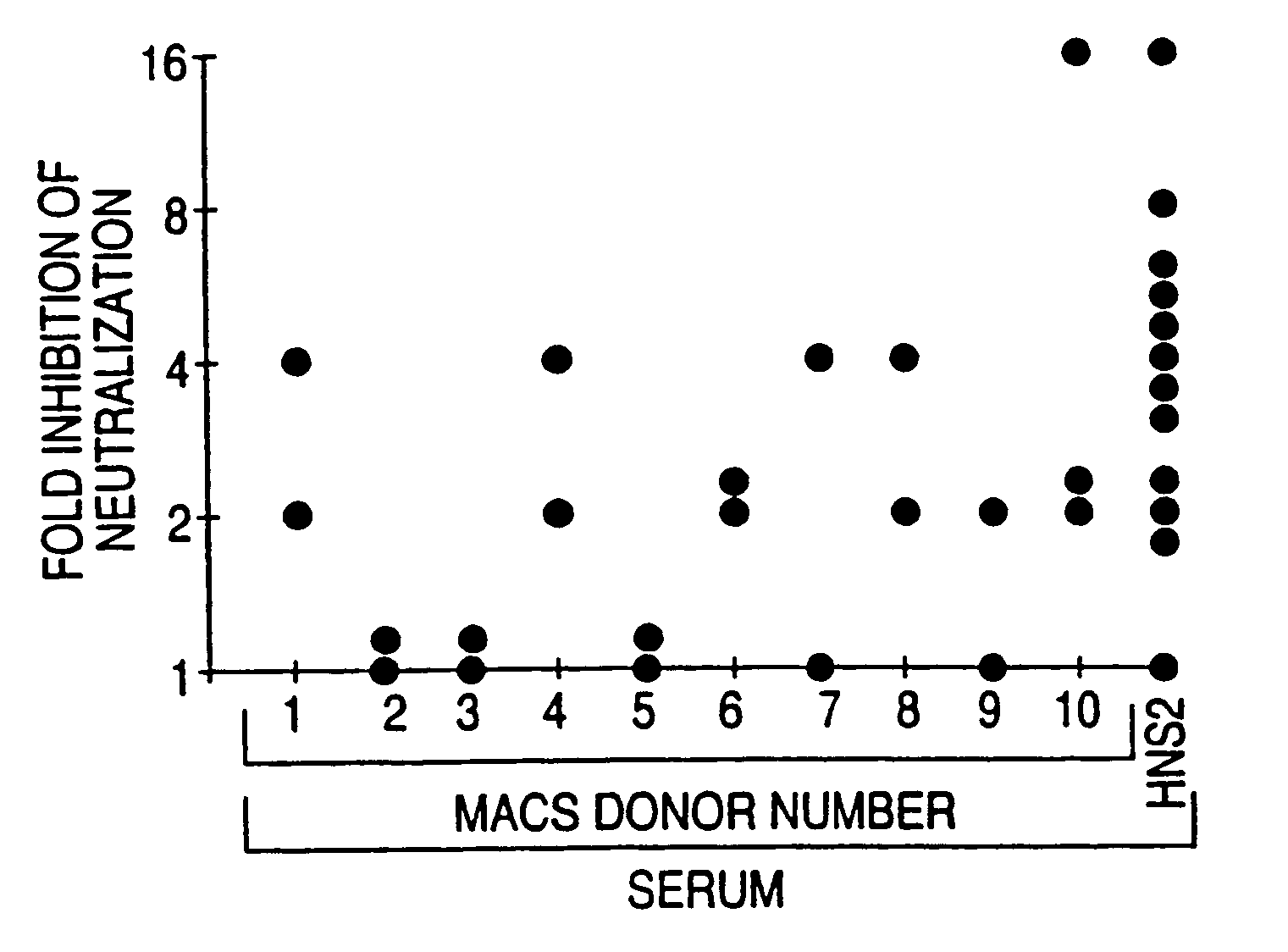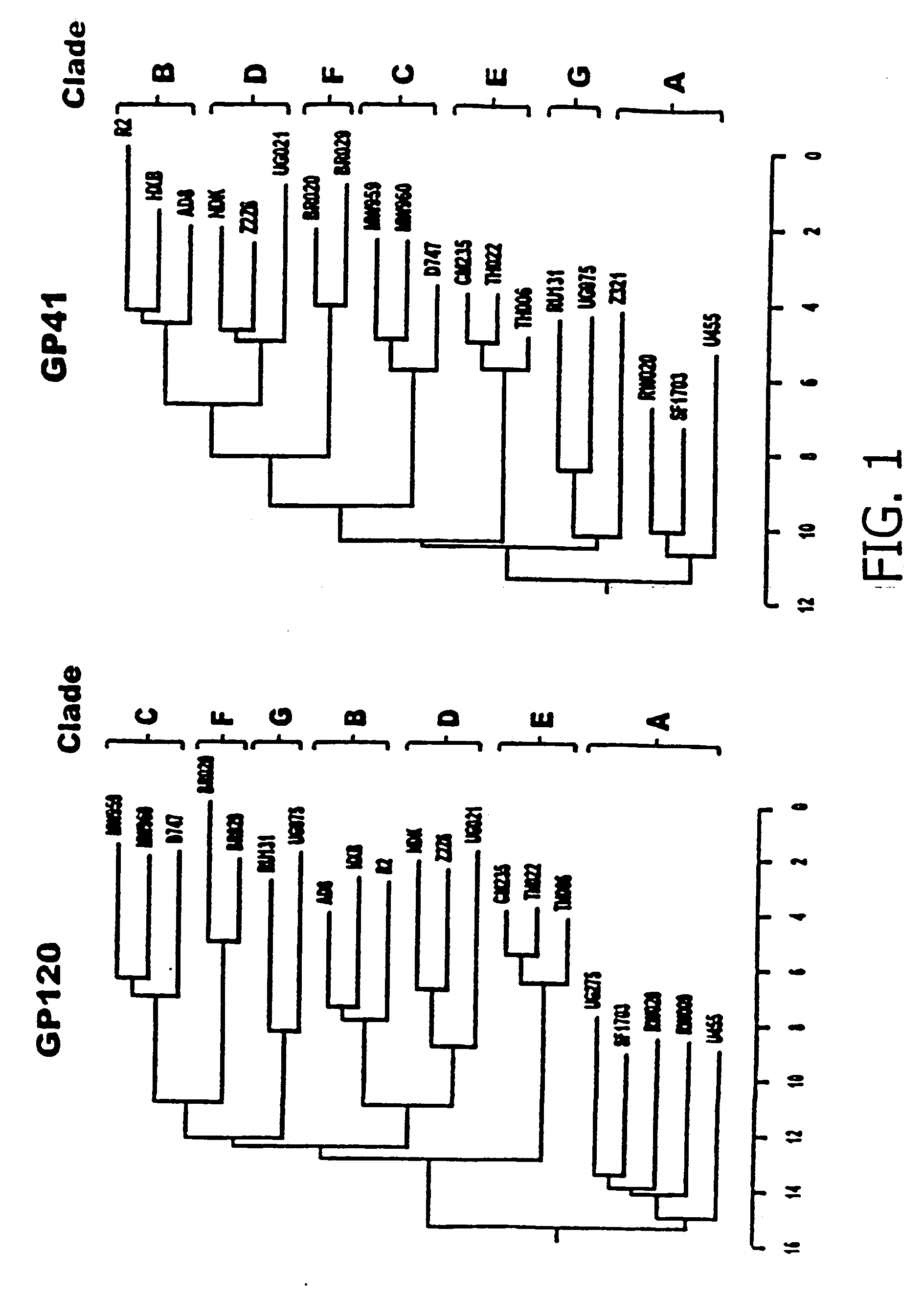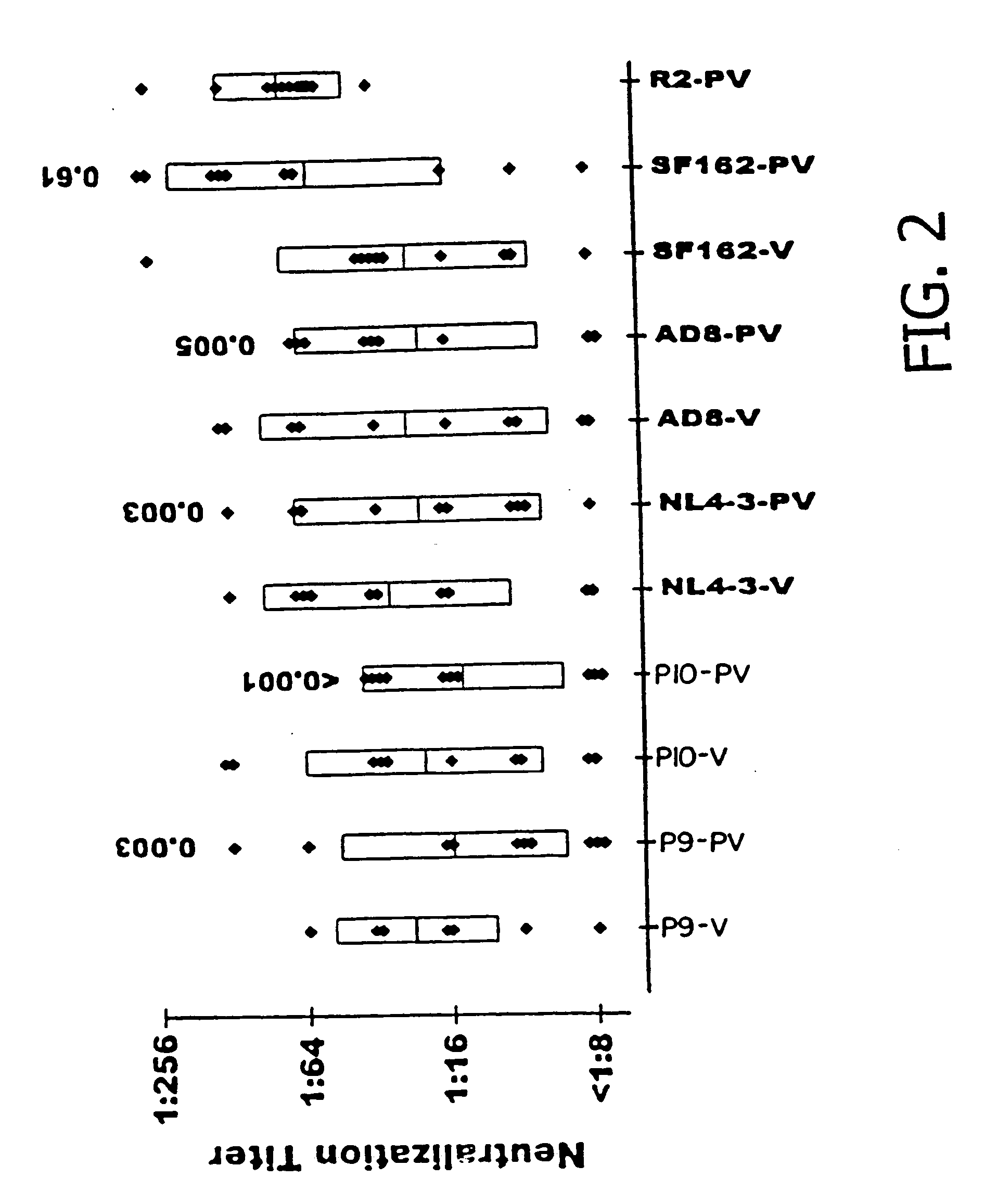Expression and characterization of HIV-1 envelope protein associated with a broadly reactive neutralizing antibody response
a technology of hiv-1 and neutralizing antibody, which is applied in the field of hiv-1 envelope proteins and peptides, can solve the problem of not being able to classify hiv-1 antigen subtypes based on genetic analyses
- Summary
- Abstract
- Description
- Claims
- Application Information
AI Technical Summary
Benefits of technology
Problems solved by technology
Method used
Image
Examples
specific embodiments
Proteins and Peptides
[0023] Proteins and peptides of the invention include the full length envelope protein having the amino acid sequence of Table 3 (SEQ ID NO:1), gp120 having the amino acid sequence corresponding to gp120 in Table 3 (amino acids: 1-520 of SEQ ID NO:1), gp41 having the amino acid sequence corresponding to gp41 in Table 3 (amino acids 521-866 of SEQ ID NO:1), as well as polypeptides and peptides corresponding to the V3 domain and other domains such as V1 / V2, C3, V4, C4 and V5. These domains correspond to the following amino acid residues of SEQ ID NO:1:
DOMAINAMINO ACID RESIDUESC1 30-124V1125-162V2163-201C2202-300V3301-336C3337-387V4388-424C4425-465V5466-509C5510-520
[0024] Polypeptides and peptides comprising any single domain may be of variable length but include the amino acid residues of Table 3 (SEQ ID NO:1) which differ from previously sequenced envelope proteins. For instance, peptides of the invention which include all or part of the V3 domain may compris...
example 1
Comparability of Clones Isolated from Different Time Points
[0084] From the samples of patient cells from each of the two time points, env clones were recovered which encoded proteins which were capable of mediating pseudovirus entry into target cells. Two such clones from each time point were further characterized. As shown in Table 1, the envelopes of all four clones mediated infection for PM1 cells and were neutralized comparably by References 1 and 2. Pseudoviruses carrying envelopes corresponding to each clone were also tested for infectivity for HOS-CD4 cells expressing either CXCR4 or CCR5, and all four were infectious only for the cells expressing CCR5, as shown in Table 2. Nucleotide sequences including the V3 regions were analyzed for each clone, with more than 300 bases assigned for each, and no differences between the clones were found (results not shown). Based on the absence of demonstration of differences in these assays, a single clone from the March sample was selec...
example 2
Clone R2 Genotype and Host Range Phenotype
[0085] The complete nucleotide sequence of the env gene clone R2 was determined and found to have an open reading frame of 2598 bases (Genbank Accession Number: AF 128126) (SEQ ID NO: 24). The amino acid sequence deduced from this sequence is shown in Table 3 (SEQ ID NO: 1). There are thirty predicted glycosylation sites, compared to twenty-nine in the consensus lade B sequence; four consensus glycosylation sites are lacking in R2, including those at residues 146, 215, 270 and 368 (numbering according to the Human Retroviruses and AIDS Database lade B consensus sequence), in the V2, C2, C2 and V4 regions of gp120, respectively (Myers et al., 1993). The consensus glycosylation sequences at residues 215 and 270 are highly and moderately variable, respectively.
[0086] Genotypic analyses conducted included evaluation of the gp120 and gp41 nucleotide coding sequences in comparison to those of a number of strains of clades A through G, as shown i...
PUM
| Property | Measurement | Unit |
|---|---|---|
| diameter | aaaaa | aaaaa |
| volume | aaaaa | aaaaa |
| volume | aaaaa | aaaaa |
Abstract
Description
Claims
Application Information
 Login to View More
Login to View More - R&D
- Intellectual Property
- Life Sciences
- Materials
- Tech Scout
- Unparalleled Data Quality
- Higher Quality Content
- 60% Fewer Hallucinations
Browse by: Latest US Patents, China's latest patents, Technical Efficacy Thesaurus, Application Domain, Technology Topic, Popular Technical Reports.
© 2025 PatSnap. All rights reserved.Legal|Privacy policy|Modern Slavery Act Transparency Statement|Sitemap|About US| Contact US: help@patsnap.com



